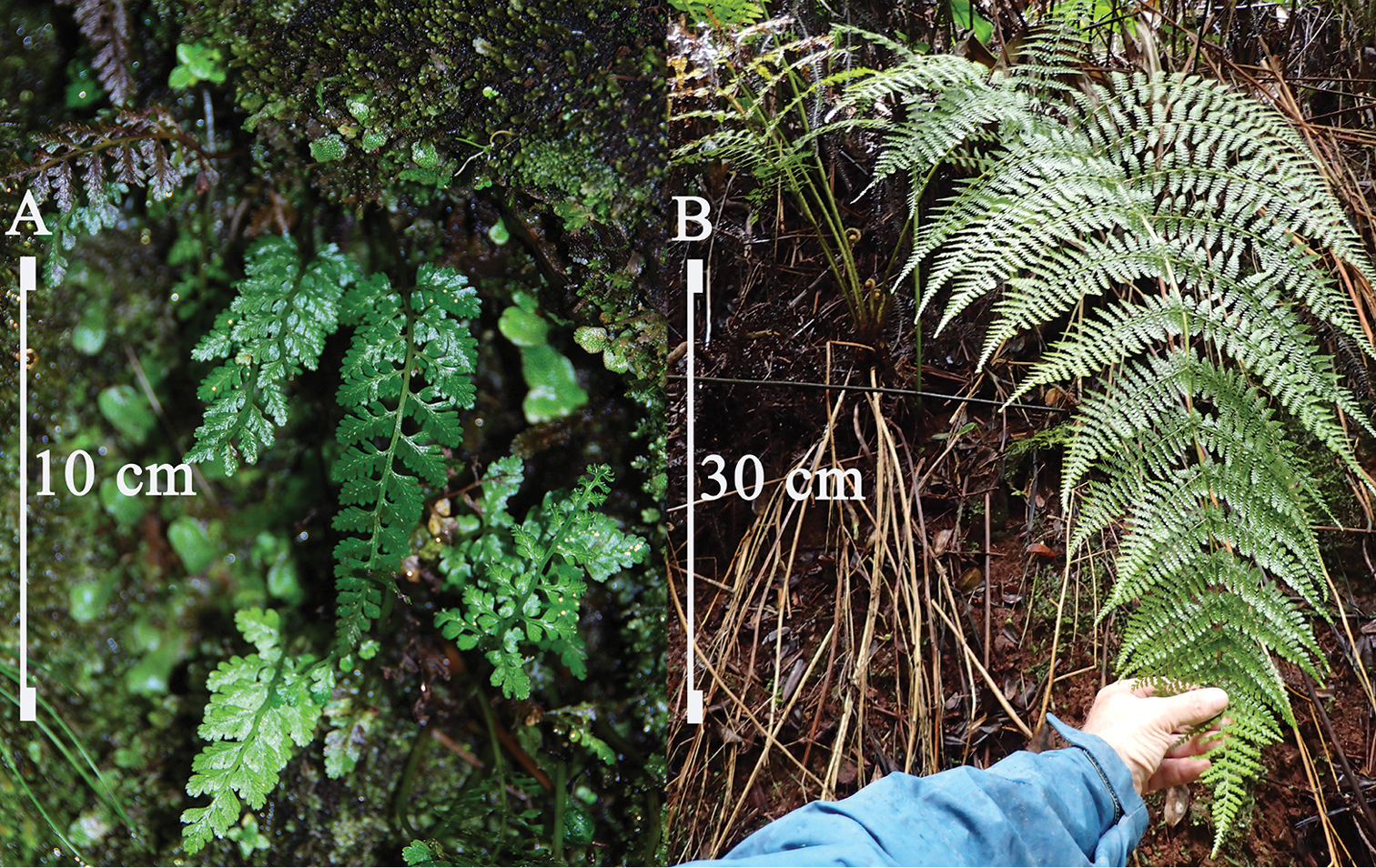 A species of fern previously unknown to science has been discovered by botanists as they surveyed areas around remote waterfalls along the slopes of Haleakalā on Maui.
A species of fern previously unknown to science has been discovered by botanists as they surveyed areas around remote waterfalls along the slopes of Haleakalā on Maui.
Named after the mountain on which it is found, Athyrium haleakalae was recently announced and described in a paper by Kenneth Wood of the National Tropical Botanical Garden and Warren Wagner of the Smithsonian Institution.
Athyrium haleakalae now represents the sixth single-island endemic fern or lycophyte taxon found on Maui.
Researchers say it is uniquely adapted to survive on vertical walls of streams, especially near waterfalls, and has the ability to withstand flooding torrents. Its small size, remote habitat and tendency to grow in such extreme areas may explain why it had been overlooked to date.

A. Mature plants of Athyrium haleakalae, showing habitat preference along concave hollow of stream, Hana Forest Reserve, East Maui, compared to B. Athyrium microphyllum, the only other member of its genus in Hawai‘i. PC: Hawaiʻi DLNR
The new fern species was found during botanical surveys around large, remote waterfalls and rugged plunge pools by botanists of the NTBG, the Plant Extinction Prevention Program, and Haleakalā National Park. All of the organizations are dedicated to preserving biological diversity and stemming the tide of extinctions.
PEPP is a project of the Pacific Cooperative Studies Unit of the University of Hawai`i at Mānoa. Its mission is to protect Hawai’i’s rarest native plants from extinction, and it is committed to reversing the trend toward extinction by managing wild plants, collecting seeds, and establishing new populations.-
read more



